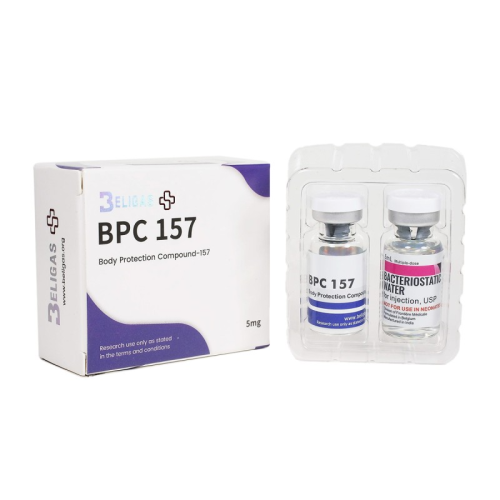CLASSIFICATION
Polypeptides
ACNE
No
WATER RETENTION
No
HBR
No
HEPATOTOXICITY
No
AROMATIZATION
No
MANUFACTURER
Beligas
WAREHOUSE
International Warehouse 3
SUBSTANCE
BPC-157 Pentadecapeptide
,
BPC 157 is a synthetic peptide currently being studied and used for its potential regenerative properties. It purportedly aids in faster muscle tissue recovery and quicker post-workout healing, making it particularly beneficial for athletes and bodybuilders.
However, like many compounds, BPC 157 comes with risks. It's essential to be aware of the potential side effects and the dosage, which can vary depending on its intended use. It’s crucial to familiarize yourself with both its advantages and disadvantages before trying it.
What is BPC 157?
BPC 157 is a peptide supplement, one among many available for purchase online or in supplement stores. Its distinctiveness stems from its extraction from proteins located in the gastrointestinal tract. While this might sound unappealing, it contributes to its unique regenerative effects.
Most research on BPC 157 has been conducted on rodents, and the findings consistently highlight its protective qualities for various bodily functions beyond just the gastrointestinal system. Its benefits include improvements in conditions such as ulcers, intestinal damage, joint issues, and bone health.
Moreover, BPC 157 may aid in reducing inflammation, combatting brain diseases, and helping to heal organ damage. Unfortunately, since these studies have primarily utilized animals—often injured for testing—it’s challenging to source BPC 157 that hasn't been associated with animal testing or cruelty.
How it Works
BPC 157 has been the subject of research since 1991, revealing numerous potential benefits linked to its ability to promote tissue regeneration, including muscle, tendon, teeth, and digestive tract healing. Noteworthy effects include:
One mechanism by which BPC 157 enhances regeneration is through its interaction with the body's nitric oxide production, which helps dilate blood vessels, facilitating better blood, oxygen, and nutrient delivery to vital body areas.
Additionally, BPC 157 promotes the health of the endothelium, the protective layer of blood vessels, thereby speeding up wound healing processes. It also boosts collagen synthesis, a key protein in skin tissue, thereby aiding the healing of wounds and damaged skin.
Its anti-inflammatory properties are reportedly robust enough to rival conventional NSAIDs, such as over-the-counter pain relievers.
BPC 157 Dosage
Typical dosages for BPC 157 are geared towards those injecting the peptide. Research indicates a common injection dosage range of 1-10 mcg/kg. For example, someone weighing 60 kg may consider a dosage of 60-600 mcg. While most users take this once daily, some have noted improved results when splitting the dosage into two daily injections.
How to Take It
If you purchase BPC 157 online, it will likely arrive in powder form, requiring reconstitution for injection.
To do this, you’ll need bacteriostatic water (BAC), which is safe for injections. Here’s how to reconstitute your powder:
Injection Methods
BPC 157 works systemically, affecting the area of need. It can be injected in several ways, emphasizing the importance of swabbing the site with alcohol beforehand to prevent infection.
: This method involves injecting under the skin and is generally less painful. Make sure to inject close to the injury site by pinching the skin near the area and inserting the needle. Some may require assistance to hold the skin or the needle steady.
Subcutaneous Injection: This technique delivers the peptide directly into the muscle and is usually more painful compared to subcutaneous injections. It's advisable to receive guidance from a professional if you are unfamiliar with this process.
Intramuscular Injection
